外研版(2019) 必修第一册 Unit 1 A New Start Using language Grammar 课件(20张)
文档属性
| 名称 | 外研版(2019) 必修第一册 Unit 1 A New Start Using language Grammar 课件(20张) | 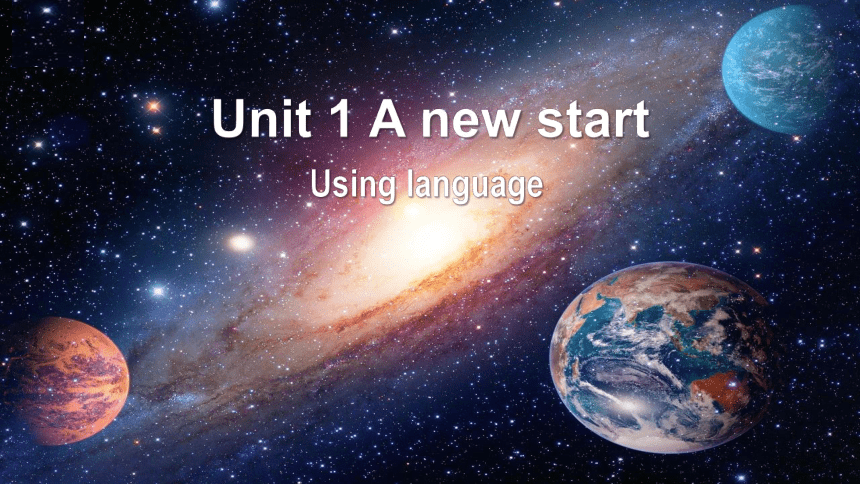 | |
| 格式 | pptx | ||
| 文件大小 | 2.8MB | ||
| 资源类型 | 教案 | ||
| 版本资源 | 外研版(2019) | ||
| 科目 | 英语 | ||
| 更新时间 | 2022-09-25 22:31:20 | ||
图片预览

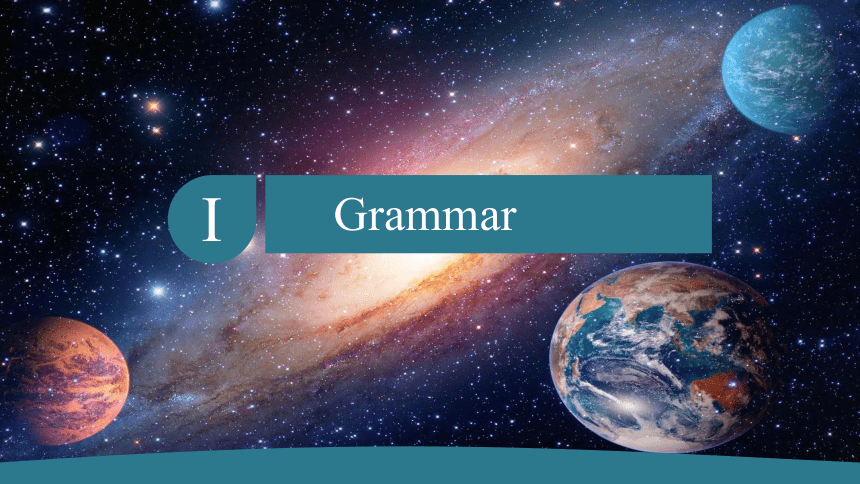

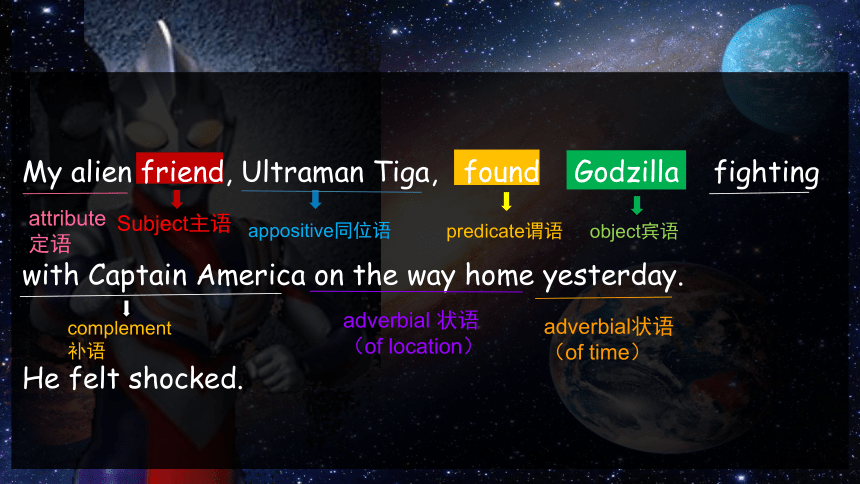
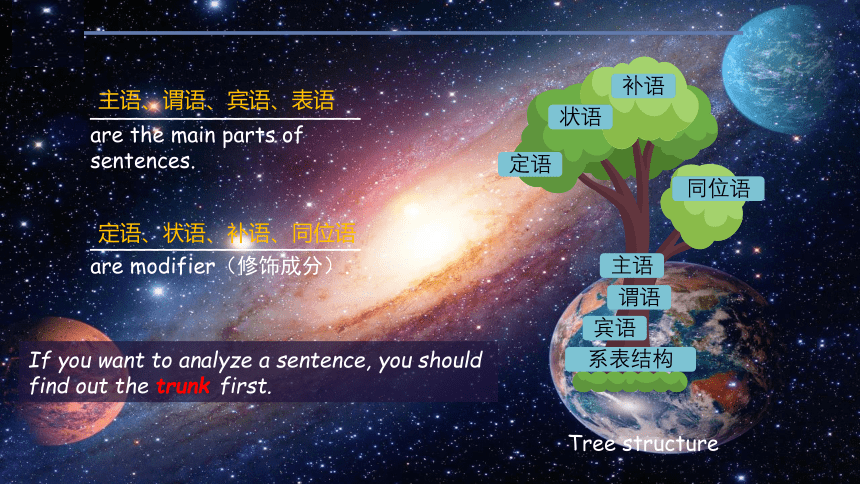
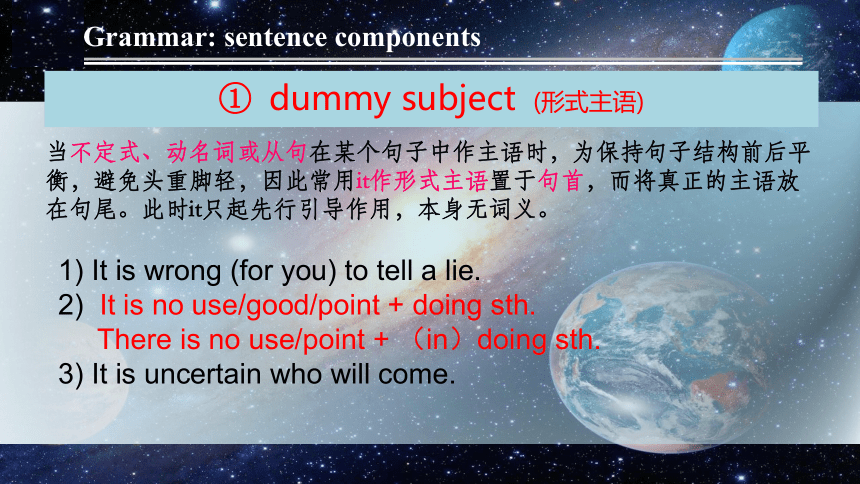
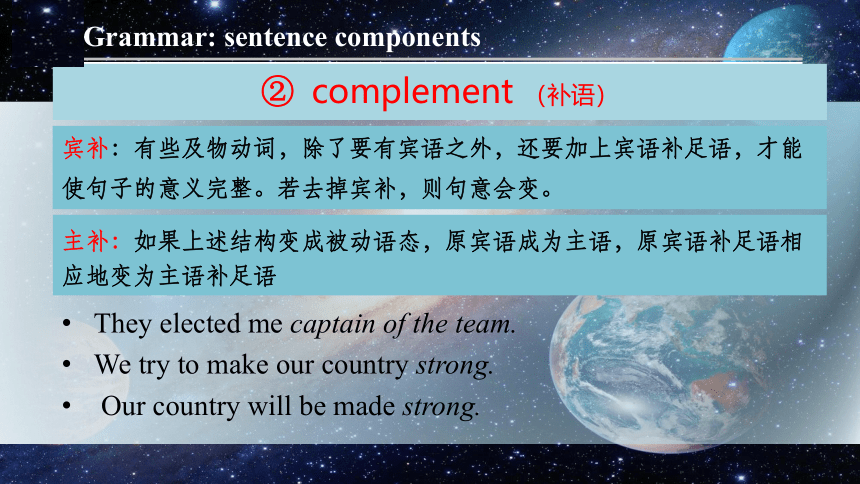
文档简介
(共19张PPT)
Unit 1 A new start
Using language
Ⅰ
Grammar
Subject主语
predicate谓语
object宾语
My alien friend, Ultraman Tiga, found Godzilla fighting with Captain America on the way home yesterday.
He felt shocked.
attribute定语
appositive同位语
complement补语
adverbial 状语
(of location)
adverbial状语
(of time)
主语
谓语
宾语
系表结构
定语
状语
补语
同位语
Tree structure
____________________are the main parts of sentences.
____________________are modifier(修饰成分).
主语、谓语、宾语、表语
定语、状语、补语、同位语
If you want to analyze a sentence, you should find out the trunk first.
Grammar: sentence components
① dummy subject (形式主语)
当不定式、动名词或从句在某个句子中作主语时,为保持句子结构前后平衡,避免头重脚轻,因此常用it作形式主语置于句首,而将真正的主语放在句尾。此时it只起先行引导作用,本身无词义。
1) It is wrong (for you) to tell a lie.
2) It is no use/good/point + doing sth.
There is no use/point + (in)doing sth.
3) It is uncertain who will come.
Grammar: sentence components
② complement (补语)
宾补:有些及物动词,除了要有宾语之外,还要加上宾语补足语,才能使句子的意义完整。若去掉宾补,则句意会变。
主补:如果上述结构变成被动语态,原宾语成为主语,原宾语补足语相应地变为主语补足语
They elected me captain of the team.
We try to make our country strong.
Our country will be made strong.
Grammar: sentence components
③ adverbial (状语)
状语是描述谓语动词作用状态的句子成分。这种描述的状态可以是:时间、地点、原因、程度、让步、比较、伴随。状语一般是副词、副词词组或者从句。
e.g.
I ran a marathon yesterday. (时间)
He lives in downtown. (地点)
He waited because of the rain. (原因)
She often goes to the gym. (频率)
He spoke to him with smile. (伴随)
It’s very cold.(程度)
Grammar: sentence components
④ appositive (同位语)
同位语是指用一个名词(或其他形式),对另一个名词或代词进行解释或补充说明,这个名词(或其他形式)就是同位语。
把同一个人或事用不同方法再说一遍。
e.g.
The rabbit ate his lunch, a tasty carrot, quickly.
We students should study hard.
We all are students.
The Great Wall, one of the wonders in the world, attracts a large number of foreign friends.
Grammar: Basic sentence structures
Match the sentences that share the same structures.
1. I saw a white-haired man.
2. I replied.
3. He gave me a smile.
4. I breathed deeply.
5. I looked at them in panic.
6. I was embarrassed.
7. His words made me a lot
more relaxed!
a He was friendly.
b The exam made me quite nervous.
c I passed him a book.
d She agreed.
e He wrote a long letter.
f He talked loudly.
g She looked after her sister patiently.
Grammar: Basic sentence structures
1. S + V (主+谓)
2. S + V + P (主+系+表)
3. S + V + O (主+谓+宾)
4. S + V + Oi + Od (主+谓+间宾+直宾)
5. S + V + O + C (主+谓+宾+宾补)
6. S + V + A (主+谓+状)
7. S + V + O + A (主+谓+宾+状)
Basic sentence structures
1. S + Vi (主+谓)
intransitive verb: happen/ occur/ take place/ come about, come, work, live, rise, arrive
不及物动词没有被动语态
不及物动词如果要接宾语,则需要加上介词,如:He arrives in Beijing.
SVP
linking verb(系动词)
1)be动词,用来表示主语状态
2)持续系动词,用来表示主语继续或保持一种状况或态度,主要有keep, remain, stay,continue
3)表像系动词,用来表示"看起来像"这一概念,主要有seem, appear
4)感官系动词,主要有feel, smell, sound, taste, look
5)变化系动词,表示主语变成什么样,主要有become, grow, turn, fall, get, go, come
6)终止系动词,表示主语最终具有什么情况,主要有prove, turn out
Basic sentence structures
3. S + V+ Oi + Od (主+谓+间宾+直宾)
谓语动词后接有两个宾语,这两个宾语都是动作的对象或承受者。
指人的是间接宾语,指物的是直接宾语。
当间接宾语放在直接宾语之后时,其前通常需要加介词for或to.
“七给”一“带”to不少,“买”“画”“制作”for来了
常跟双宾语的动词:
①需借助于to的动词: pass, hand, give, offer, lend, return, send, show, teach, tell, write, bring
②需借助于for的动词: buy,draw, make, find, get, provide
practice: sentence making
How can I review English
Oblivion
It’s very warm-hearted of you to help me review English.
Basic sentence structures
2. S + V + O + C (主+谓+宾语+宾补)
常考点:
S + V + O + C
do(动作发生的全过程)
doing (动作正在发生)
done(被动)
“五看三使二听一感觉”
五看:see, look at, watch, observe, notice
三使:make,let,have
二听:hear,listen to
一感觉:feel
Basic sentence structures
常考点:
type of sentence
Aside from simple sentence, there are compound sentence(并列句), complex sentence(复合句), and compund-complex sentence(并列复合句).
简单句只有一套主谓结构
并列句:包含两个或两个以上主谓结构,用并列连词或分号来连接平行的词、词组和分句. eg. The food was good, but he had little appetite.
常见并列连词(coordinating conjunction):and, but, or, so, rather than, not only...but also, however
复合句:简单句+从句,用从属连词来连接. eg. The movie, The Avengers, which was produced by Marvel, has been widely aclaimed since its first release.
易错点:although, though不能与but连用,可以用still/ yet/
Story-telling:
Look at the pictures and tell the story by using basic sentence structures.
Production
Summary
Unit 1 A new start
Using language
Ⅰ
Grammar
Subject主语
predicate谓语
object宾语
My alien friend, Ultraman Tiga, found Godzilla fighting with Captain America on the way home yesterday.
He felt shocked.
attribute定语
appositive同位语
complement补语
adverbial 状语
(of location)
adverbial状语
(of time)
主语
谓语
宾语
系表结构
定语
状语
补语
同位语
Tree structure
____________________are the main parts of sentences.
____________________are modifier(修饰成分).
主语、谓语、宾语、表语
定语、状语、补语、同位语
If you want to analyze a sentence, you should find out the trunk first.
Grammar: sentence components
① dummy subject (形式主语)
当不定式、动名词或从句在某个句子中作主语时,为保持句子结构前后平衡,避免头重脚轻,因此常用it作形式主语置于句首,而将真正的主语放在句尾。此时it只起先行引导作用,本身无词义。
1) It is wrong (for you) to tell a lie.
2) It is no use/good/point + doing sth.
There is no use/point + (in)doing sth.
3) It is uncertain who will come.
Grammar: sentence components
② complement (补语)
宾补:有些及物动词,除了要有宾语之外,还要加上宾语补足语,才能使句子的意义完整。若去掉宾补,则句意会变。
主补:如果上述结构变成被动语态,原宾语成为主语,原宾语补足语相应地变为主语补足语
They elected me captain of the team.
We try to make our country strong.
Our country will be made strong.
Grammar: sentence components
③ adverbial (状语)
状语是描述谓语动词作用状态的句子成分。这种描述的状态可以是:时间、地点、原因、程度、让步、比较、伴随。状语一般是副词、副词词组或者从句。
e.g.
I ran a marathon yesterday. (时间)
He lives in downtown. (地点)
He waited because of the rain. (原因)
She often goes to the gym. (频率)
He spoke to him with smile. (伴随)
It’s very cold.(程度)
Grammar: sentence components
④ appositive (同位语)
同位语是指用一个名词(或其他形式),对另一个名词或代词进行解释或补充说明,这个名词(或其他形式)就是同位语。
把同一个人或事用不同方法再说一遍。
e.g.
The rabbit ate his lunch, a tasty carrot, quickly.
We students should study hard.
We all are students.
The Great Wall, one of the wonders in the world, attracts a large number of foreign friends.
Grammar: Basic sentence structures
Match the sentences that share the same structures.
1. I saw a white-haired man.
2. I replied.
3. He gave me a smile.
4. I breathed deeply.
5. I looked at them in panic.
6. I was embarrassed.
7. His words made me a lot
more relaxed!
a He was friendly.
b The exam made me quite nervous.
c I passed him a book.
d She agreed.
e He wrote a long letter.
f He talked loudly.
g She looked after her sister patiently.
Grammar: Basic sentence structures
1. S + V (主+谓)
2. S + V + P (主+系+表)
3. S + V + O (主+谓+宾)
4. S + V + Oi + Od (主+谓+间宾+直宾)
5. S + V + O + C (主+谓+宾+宾补)
6. S + V + A (主+谓+状)
7. S + V + O + A (主+谓+宾+状)
Basic sentence structures
1. S + Vi (主+谓)
intransitive verb: happen/ occur/ take place/ come about, come, work, live, rise, arrive
不及物动词没有被动语态
不及物动词如果要接宾语,则需要加上介词,如:He arrives in Beijing.
SVP
linking verb(系动词)
1)be动词,用来表示主语状态
2)持续系动词,用来表示主语继续或保持一种状况或态度,主要有keep, remain, stay,continue
3)表像系动词,用来表示"看起来像"这一概念,主要有seem, appear
4)感官系动词,主要有feel, smell, sound, taste, look
5)变化系动词,表示主语变成什么样,主要有become, grow, turn, fall, get, go, come
6)终止系动词,表示主语最终具有什么情况,主要有prove, turn out
Basic sentence structures
3. S + V+ Oi + Od (主+谓+间宾+直宾)
谓语动词后接有两个宾语,这两个宾语都是动作的对象或承受者。
指人的是间接宾语,指物的是直接宾语。
当间接宾语放在直接宾语之后时,其前通常需要加介词for或to.
“七给”一“带”to不少,“买”“画”“制作”for来了
常跟双宾语的动词:
①需借助于to的动词: pass, hand, give, offer, lend, return, send, show, teach, tell, write, bring
②需借助于for的动词: buy,draw, make, find, get, provide
practice: sentence making
How can I review English
Oblivion
It’s very warm-hearted of you to help me review English.
Basic sentence structures
2. S + V + O + C (主+谓+宾语+宾补)
常考点:
S + V + O + C
do(动作发生的全过程)
doing (动作正在发生)
done(被动)
“五看三使二听一感觉”
五看:see, look at, watch, observe, notice
三使:make,let,have
二听:hear,listen to
一感觉:feel
Basic sentence structures
常考点:
type of sentence
Aside from simple sentence, there are compound sentence(并列句), complex sentence(复合句), and compund-complex sentence(并列复合句).
简单句只有一套主谓结构
并列句:包含两个或两个以上主谓结构,用并列连词或分号来连接平行的词、词组和分句. eg. The food was good, but he had little appetite.
常见并列连词(coordinating conjunction):and, but, or, so, rather than, not only...but also, however
复合句:简单句+从句,用从属连词来连接. eg. The movie, The Avengers, which was produced by Marvel, has been widely aclaimed since its first release.
易错点:although, though不能与but连用,可以用still/ yet/
Story-telling:
Look at the pictures and tell the story by using basic sentence structures.
Production
Summary
